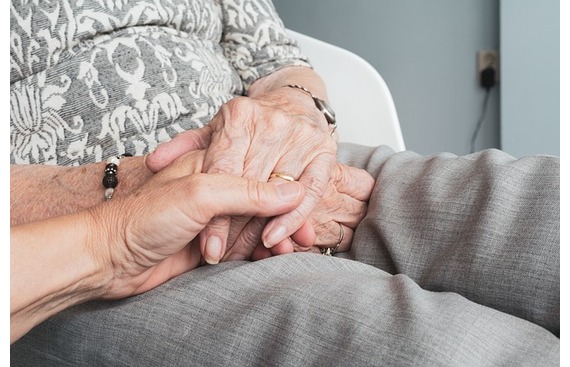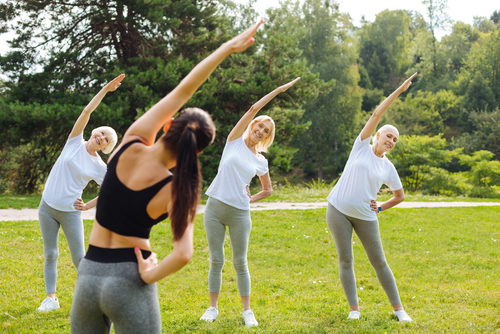Exercise Helps Prevent and Treat Dementia
Date Posted:6 November 2022

DEMENTIA AND AGEING POPULATION
Dementia is a major threat to our ageing population. It destroys life quality of affected patients and immediate family, turning spouses or children into caregivers and often straining family finances.
Alzheimer disease accounts for most dementia cases, with contributions from dementia with Lewy bodies, vascular disease, frontotemporal degeneration syndromes, and various other less common disorders.
Less devastating but also disrupting life quality is mild cognitive impairment in more than 10% of seniors age above 70, with more than 20% affected after the age of 80. Subtle loss of cognitive skills often accompanies normal ageing - e.g. frequently forgetting names and telephone numbers.
Often, mild cognitive impairment is an early warning sign subsequently leading to dementia.
 EXERCISE TO HELP PREVENT AND TREAT DEMENTIA
EXERCISE TO HELP PREVENT AND TREAT DEMENTIA
Exercise plays a crucial role in preventing and treating dementia, and can be used as a therapeutic strategy. Research has found that midlife exercise is often associated with a significant reduction in risk of dementia and mild cognitive impairment. Patients with dementia or mild cognitive impairment achieved better cognitive scores after 6 to 12 months of exercise.
In particular, aerobic exercises in healthy adults were associated with significantly improved cognitive scores. One year of aerobic exercise may contribute to significantly larger hippocampal volumes (part of the brain playing a major role in learning and memory) and better spatial memory.
Compared to unfit seniors, physically fit seniors were found to have significantly larger hippocampal or gray matter volumes. This is important because gray matter of the brain is a major component of the central nervous system involved in muscle control, and sensory perception such as seeing and hearing, memory, emotions, speech, decision making, and self-control.
Exercise may encourage new brain cell growth and survival. Besides a brain neuroprotective effect, physical exercise also helps slows down cognitive decline by maintaining good blood flow to the brain, thereby reducing cerebrovascular risk (when the blood supply to part of the brain is interrupted or reduced, preventing brain tissue from getting oxygen).
HOW DO WE USE EXERCISE AS A THERAPEUTIC TREATMENT?
By doing long-term, regular cardio exercises. Research has found that long-term, regular exercise slows brain ageing and promotes resilience to dementing neurodegenerative mechanisms. Cardiovascular exercises is especially important because it increases heart rate and also increases the need for oxygen.
During normal breathing, in tiny blood vessels in the lung, the red blood cells pick up oxygen when we breathe in and carry it through the bloodstream to all parts of the body. When you perform cardio exercises, your body's need for oxygen increases with exertion so your heart pump faster and you breathe harder. This means increased blood circulation, allowing even more oxygen to travel through the bloodstream to all parts of the body and delivering much needed oxygen to brain cells.
That is why for exercise to be an effective therapeutic treatment for dementia and cognitive decline, each exercise session should last at least 30 minutes. Anything less and your body won't have enough time to respond to such short stimulus. There isn't just enough time for your heart to pump more blood to deliver that extra oxygen to all parts of your body and brain.
 CAN KETTLEBELL HELP?
CAN KETTLEBELL HELP?
Sure, why not? Kettlebell exercises can increase heart rate just as much as a typical cardio session. When you train with kettlebell, you have a cardio exercise that's also simultaneously strength training and functional training.
How good is that?! Just the perfect tool for anyone training for overall physical fitness and at the same time wanting to slowdown dementia and cognitive decline.
Don't worry if you don't have a kettlebell though. Battle ropes works too. Battle ropes are all about speed and power so it is an amazing cardio equipment.
You can also perform cardio exercises with dumbbells, slam balls and wall balls. If you don't have those, simple exercises like walking, swimming, cycling, and hiking can also help.
Any exercises or sports that raises your heart rate and increases your oxygen uptake during peak exercise would suffice. You must also exercise regularly and sustain it for at least 30 minutes each time.
NO DEFINITIVE EVIDENCE BUT THE BENEFITS ARE CLEAR
There is not yet definitive evidence from randomised trials, but several studies have found that physical activity in early, mid and late life is associated with a lower risk of cognitive decline and dementia. The benefits of exercise are clear when considering other factors associated with the risk of developing dementia.
People who exercise regularly are less likely to experience heart disease and stroke, both factors that are associated with an increased risk of developing dementia. Exercise is also important in reducing the risk of high blood pressure, type 2 diabetes and obesity, all of which are risk factors for dementia.
Other studies have found that higher levels of physical exercise are associated with less cognitive decline in older people. People who exercise also experience a slower loss of brain tissue as they age.
Exercises promotes blood flow to the brain, reduce cardiovascular risk factors and possibly stimulate nerve cell growth and survival. All exercise is worth doing.
If you haven't yet, or are not exercising regularly, time to gear up and start exercising now!
References and further reading:
https://www.ncbi.nlm.nih.gov/pmc/articles/PMC3258000/






